The James Webb telescope took some stunning images in 2023
Just a year and a half into its mission, JWST is revolutionizing our view of the cosmos

The James Webb telescope took many dazzling photos in 2023, five of which are shown here. Clockwise, from top left: HH 211 (young star jets), Rho Ophiuchi (a stellar nursery), Uranus, the Crab Nebula (a supernova remnant), and the Orion Bar (another stellar nursery).
All: STScI/NASA, ESA, CSA
- More than 2 years ago
This year, the James Webb Space Telescope celebrated its first full year of operation, during which it returned a treasure trove of images. And it’s just getting started.
Since it first began sending pictures back home in July 2022 from its location 1.5 million kilometers beyond Earth’s orbit, JWST has peered deeper in space and farther back in time than any previous telescope could manage (SN: 7/11/22). Hundreds of scientific papers have already been published based on JWST images, barely a year and a half into the telescope’s planned 10-year lifetime.
But JWST may end up having much more than a decade to study the cosmos. Thanks to a perfect launch, the mission was left with far more fuel to point the telescope than expected, astrophysicist Jane Rigby of NASA’s Goddard Spaceflight Center in Greenbelt, Md., said in September at the First Year of JWST Science Conference in Baltimore. “Now we have more than 25 years of propellant.”
If the first 18 months of JWST science are any indication, the telescope could be ushering in a decades-long golden age for astronomy. Here’s just a few of the things JWST showed us in 2023.
A closer look at the nearest stellar nursery
The swirling Rho Ophiuchi cloud complex is a dusty delivery room packed with about 50 young stars comparable in size to our sun or smaller (SN: 2/18/08). These infants were born when gas and dust in the cloud condensed in quantities large enough for gravity to kick-start the fusion reactions that burn in the hearts of stars.
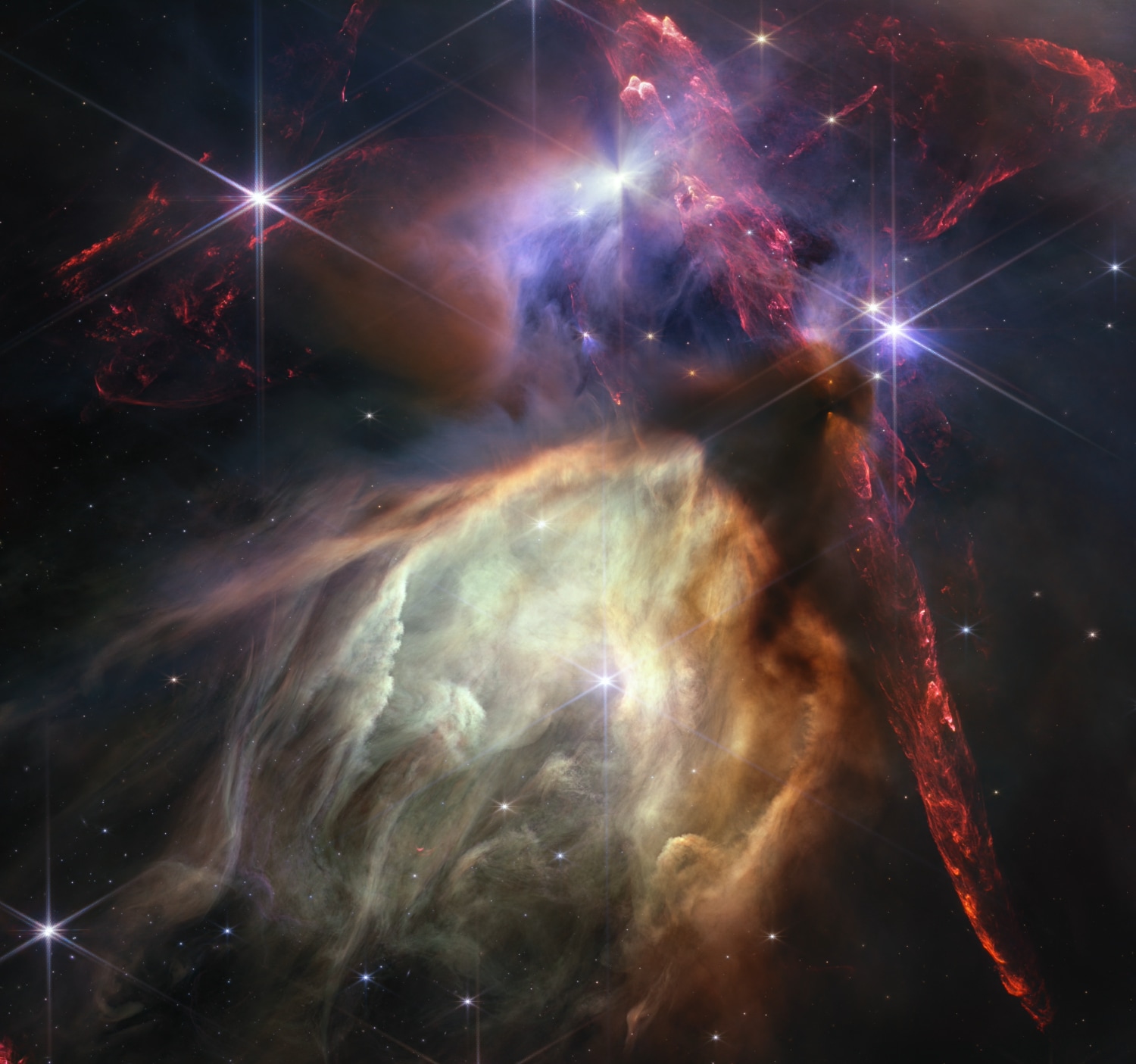
In an image that JWST collected of the stellar nursery in July, the very youngest stars are still ensconced in dark regions across the top and down the right. Infant stars announce themselves with jets of hydrogen molecules that appear as streaks of long wavelength infrared light, colored red in this depiction, that result when the new stars develop.
The JWST image is clear enough to reveal shadows around some of the stars that could be dusty disks like the one that encircled our sun when it was young. Those disks in turn are where planets are born. Our own sun started out in the same sort of stellar nursery 4.6 billion years ago.
At 390 light-years from Earth, Rho Ophiuchi is the closest stellar nursery to us. Because there are no stars between us and the nursery, JWST has a front row seat to let us see the birth and early lives of stars much like the sun.
Could it be twins?
Glowing columns bracket what seems to be a young star that’s destined to grow to eventually rival our sun in size. The jets, designated HH 211, are about 1,000 light-years from Earth and embedded in the cloud of dust that bore the star. These columns are visible because the jets of gas that young stars emit in the early stages of their lives ram into the dust nearby at supersonic speeds.
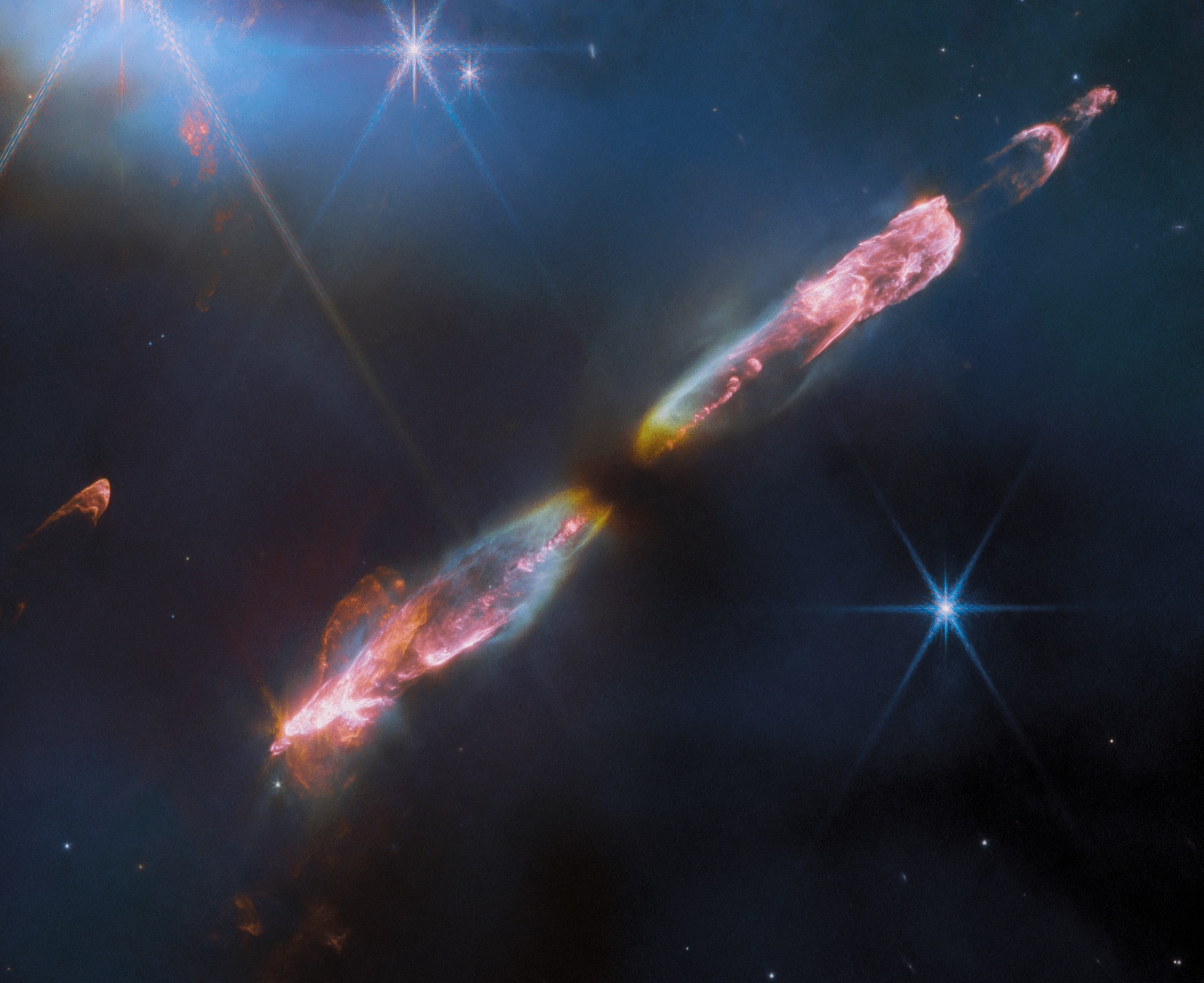
The images of the jets captured with JWST’s infrared cameras have up to 10 times the resolution of any previous pictures of HH 211. Ripples along the center of the outflows hint that HH 211 may in fact be twins — a pair of young stars orbiting each other — instead of a lone star.
Watching the weather on a ringed ice giant
Even in a brief, 12-minute exposure with JWST cameras, there are signs that it was a cloudy day in at least a few places on giant, icy Uranus. This view of the planet’s north pole, taken in February, is possible because Uranus is tilted on its side. The overhead perspective makes the faint inner rings visible with unprecedented resolution (SN: 9/23/22). Other notable features include a pair of bright spots in the planet’s atmosphere that appear to be clouds, and a large, misty-looking polar cap.
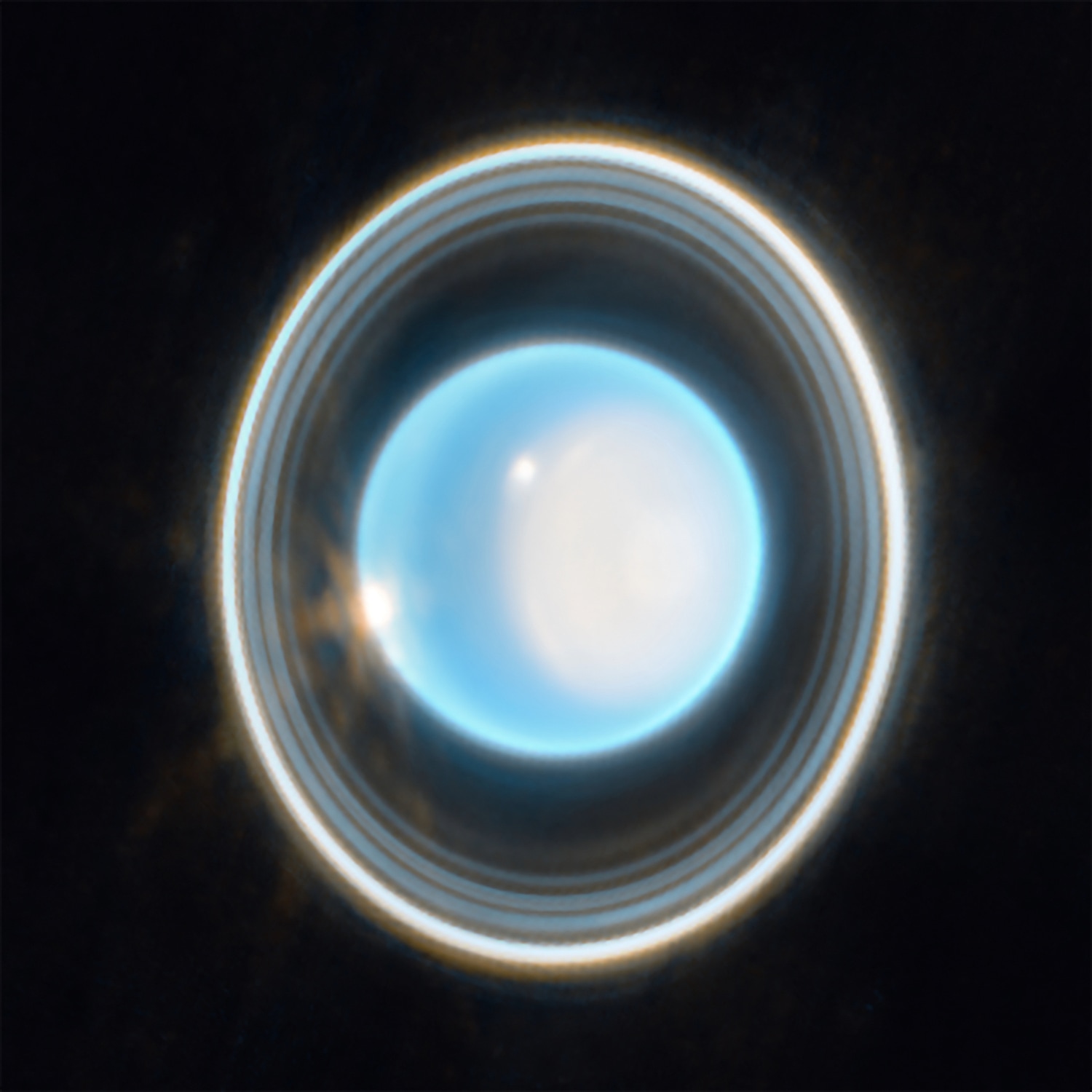
The polar cap seems to form only as the orbit of Uranus exposes the north pole to the sun, and it fades away as the planet continues on its way. What the cap is, and why it’s present only when the pole faces the sun, is not yet clear. Future JWST studies and longer photographic exposures could solve the puzzle, along with giving us additional stunning views of the icy blue giant.
Elements for life in the Orion Nebula
Signs of chemicals crucial for the formation of life have turned up in the disk of dust around a star deep in a portion of the Orion Nebula known as the Orion Bar. Although too small to be visible in this image of the nebula that JWST captured in June, the disk surrounds a dwarf red star designated d203-506.
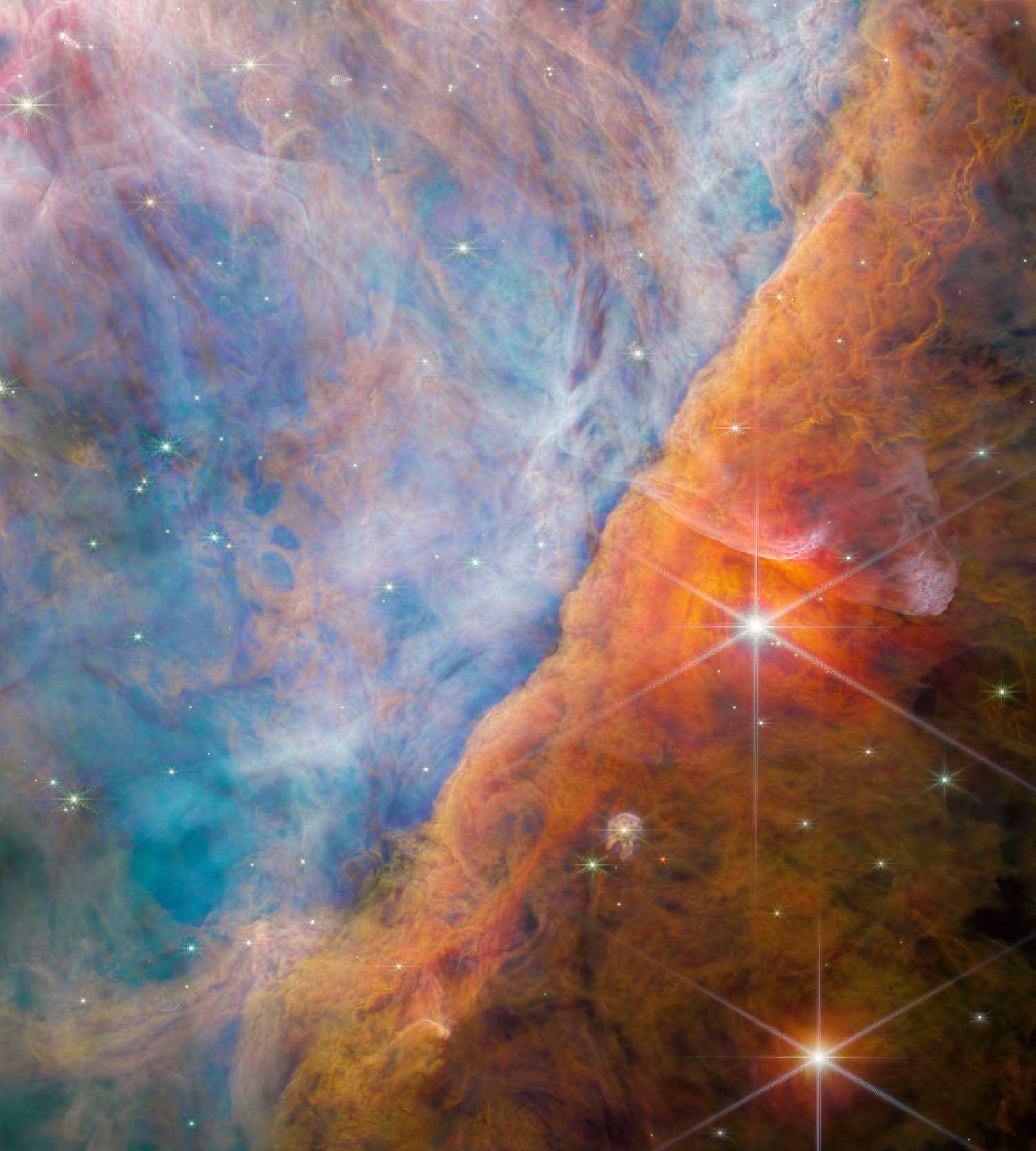
The cool, red star isn’t much like our sun, but it exists in harsh conditions similar to the ones that our sun probably experienced early in life, thanks to the radiation bathing it from young, hot stars nearby. JWST detected a carbon and hydrogen compound in the red star’s disk that suggests chemicals important for the development of life can withstand the intense radiation in stellar nurseries.
Surprisingly, the radiation that many researchers thought would disrupt organic molecules may instead provide the energy needed to create the chemicals that are the building blocks of life.
Peering into the heart of the crab
There is a small bright dot near the middle of the Crab Nebula in this JWST image released in October. The dot is a tiny, immensely dense neutron star that was left behind after a supernova explosion that appeared in Earth’s sky in the year 1054. The neutron star has intense magnetic fields that whip around as it spins, seemingly stirring up a smoky cloud.
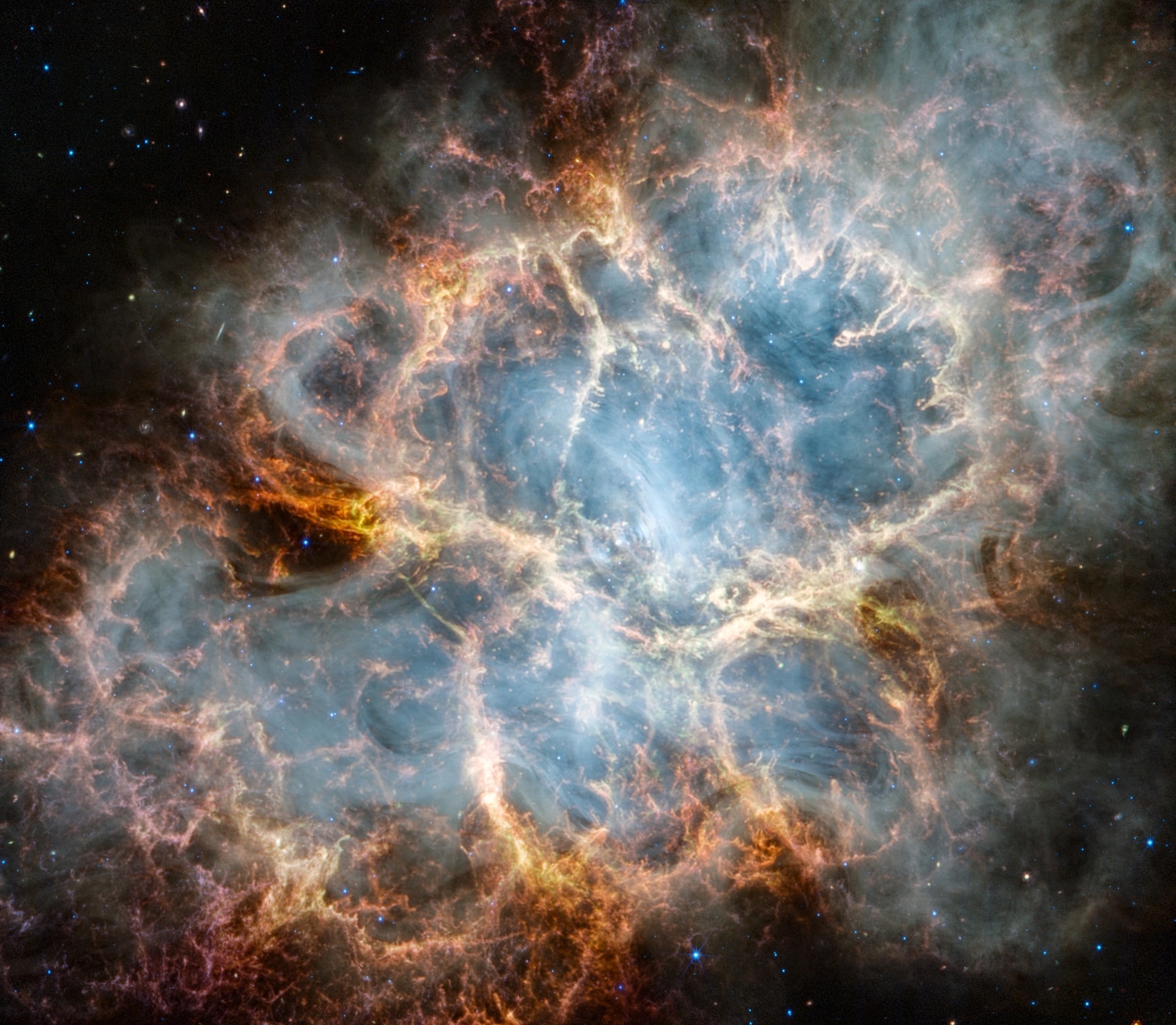
The wispy, white features are not smoke, but radiation that results when the neutron star’s magnetic fields accelerate electrons to super high speeds, close to the speed of light. The fine structure in the nebula’s image shows curving white rows that mark the lines of the magnetic fields.
The Crab Nebula’s entire origin story is not yet clear, but the details that JWST’s infrared cameras provide, in conjunction with images from the Hubble Space Telescope and other observatories, are helping astronomers to piece the Crab’s backstory together (SN: 5/23/22).
These five images hint at what we’re likely to see from JWST over the next quarter century of observations. “Trying to keep pace with the results coming from JWST can be a daunting and challenging task,” said astronomer Marc Postman of the Space Telescope Science Institute in Baltimore at the September conference. “The sheer volume and diversity of discoveries are both exhilarating and challenging. And that’s precisely the kind of challenge we love to embrace.”







